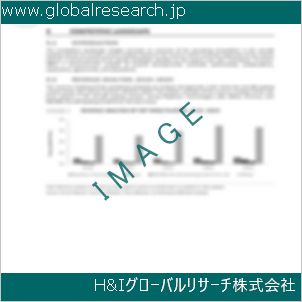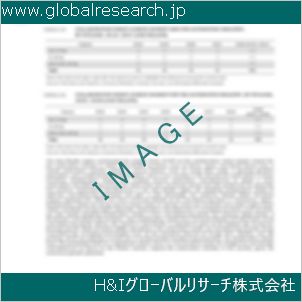Table of Contents
1 Industry Overview of Copperhydroxide
1.1 Definition and Specifications of Copperhydroxide
1.1.1 Definition of Copperhydroxide
1.1.2 Specifications of Copperhydroxide
1.2 Classification of Copperhydroxide
1.3 Applications of Copperhydroxide
1.3.1 Nuclear Application
1.3.2 Non-Nuclear Application
1.4 Industry Chain Structure of Copperhydroxide
1.5 Industry Overview and Major Regions Status of Copperhydroxide
1.5.1 Industry Overview of Copperhydroxide
1.5.2 Global Major Regions Status of Copperhydroxide
1.6 Industry Policy Analysis of Copperhydroxide
1.7 Industry News Analysis of Copperhydroxide
2 Manufacturing Cost Structure Analysis of Copperhydroxide
2.1 Raw Material Suppliers and Price Analysis of Copperhydroxide
2.2 Equipment Suppliers and Price Analysis of Copperhydroxide
2.3 Labor Cost Analysis of Copperhydroxide
2.4 Other Costs Analysis of Copperhydroxide
2.5 Manufacturing Cost Structure Analysis of Copperhydroxide
2.6 Manufacturing Process Analysis of Copperhydroxide
3 Technical Data and Manufacturing Plants Analysis of Copperhydroxide
3.1 Capacity and Commercial Production Date of Global Copperhydroxide Major Manufacturers in 2023
3.2 Manufacturing Plants Distribution of Global Copperhydroxide Major Manufacturers in 2023
3.3 R&D Status and Technology Source of Global Copperhydroxide Major Manufacturers in 2023
3.4 Raw Materials Sources Analysis of Global Copperhydroxide Major Manufacturers in 2023
4 Capacity, Production and Revenue Analysis of Copperhydroxide by Regions, Types and Manufacturers
4.1 Global Capacity, Production and Revenue of Copperhydroxide by Regions 2019-2024
4.2 Global and Major Regions Capacity, Production, Revenue and Growth Rate of Copperhydroxide 2019-2024
4.3 Global Capacity, Production and Revenue of Copperhydroxide by Types 2019-2024
4.4 Global Capacity, Production and Revenue of Copperhydroxide by Manufacturers 2019-2024
5 Price, Cost, Gross and Gross Margin Analysis of Copperhydroxide by Regions, Types and Manufacturers
5.1 Price, Cost, Gross and Gross Margin Analysis of Copperhydroxide by Regions 2019-2024
5.2 Price, Cost, Gross and Gross Margin Analysis of Copperhydroxide by Types 2019-2024
5.3 Price, Cost, Gross and Gross Margin Analysis of Copperhydroxide by Manufacturers 2019-2024
6 Consumption Volume, Consumption Value and Sale Price Analysis of Copperhydroxide by Regions, Types and Applications
6.1 Global Consumption Volume and Consumption Value of Copperhydroxide by Regions 2019-2024
6.2 Global and Major Regions Consumption Volume, Consumption Value and Growth Rate of Copperhydroxide 2019-2024
6.3 Global Consumption Volume and Consumption Value of Copperhydroxide by Types 2019-2024
6.4 Global Consumption Volume and Consumption Value of Copperhydroxide by Applications 2019-2024
6.5 Sale Price of Copperhydroxide by Regions 2019-2024
6.6 Sale Price of Copperhydroxide by Types 2019-2024
6.7 Sale Price of Copperhydroxide by Applications 2019-2024
6.8 Market Share Analysis of Copperhydroxide by Different Sale Price Levels
7 Supply, Import, Export and Consumption Analysis of Copperhydroxide
7.1 Supply, Consumption and Gap of Copperhydroxide 2019-2024
7.2 Global Capacity, Production, Price, Cost, Revenue, Supply, Import, Export and Consumption of Copperhydroxide 2019-2024
7.3 USA Capacity, Production, Price, Cost, Revenue, Supply, Import, Export and Consumption of Copperhydroxide 2019-2024
7.4 EU Capacity, Production, Price, Cost, Revenue, Supply, Import, Export and Consumption of Copperhydroxide 2019-2024
7.5 China Capacity, Production, Price, Cost, Revenue, Supply, Import, Export and Consumption of Copperhydroxide 2019-2024
7.6 Japan Capacity, Production, Price, Cost, Revenue, Supply, Import, Export and Consumption of Copperhydroxide 2019-2024
8 Major Manufacturers Analysis of Copperhydroxide
8.1 Manufacturer One
8.1.1 Company Profile
8.1.2 Product Picture and Specifications
8.1.2.1 Type I
8.1.2.2 Type II
8.1.2.3 Type III
8.1.3 Capacity, Production, Price, Cost, Gross and Revenue
8.1.4 Contact Information
8.2 Manufacturer Two
8.2.1 Company Profile
8.2.2 Product Picture and Specifications
8.2.2.1 Type I
8.2.2.2 Type II
8.2.2.3 Type III
8.2.3 Capacity, Production, Price, Cost, Gross and Revenue
8.2.4 Contact Information
8.3 Manufacturer Three
8.3.1 Company Profile
8.3.2 Product Picture and Specifications
8.3.2.1 Type I
8.3.2.2 Type II
8.3.2.3 Type III
8.3.3 Capacity, Production, Price, Cost, Gross and Revenue
8.3.4 Contact Information
8.4 Manufacturer Four
8.4.1 Company Profile
8.4.2 Product Picture and Specifications
8.4.2.1 Type I
8.4.2.2 Type II
8.4.2.3 Type III
8.4.3 Capacity, Production, Price, Cost, Gross and Revenue
8.4.4 Contact Information
8.5 Manufacturer Five
8.5.1 Company Profile
8.5.2 Product Picture and Specifications
8.5.2.1 Type I
8.5.2.2 Type II
8.5.2.3 Type III
8.5.3 Capacity, Production, Price, Cost, Gross and Revenue
8.5.4 Contact Information
…
9 Marketing Trader or Distributor Analysis of Copperhydroxide
9.1 Marketing Channels Status of Copperhydroxide
9.2 Traders or Distributors with Contact Information of Copperhydroxide by Regions
9.3 Ex-work Price, Channel Price and End Buyer Price Analysis of Copperhydroxide
9.4 Regional Import, Export and Trade Analysis of Copperhydroxide
10 Industry Chain Analysis of Copperhydroxide
10.1 Upstream Major Raw Materials Suppliers Analysis of Copperhydroxide
10.1.1 Major Raw Materials Suppliers with Contact Information Analysis of Copperhydroxide
10.1.2 Major Raw Materials Suppliers with Supply Volume Analysis of Copperhydroxide by Regions
10.2 Upstream Major Equipment Suppliers Analysis of Copperhydroxide
10.2.1 Major Equipment Suppliers with Contact Information Analysis of Copperhydroxide
10.2.2 Major Equipment Suppliers with Product Pictures Analysis of Copperhydroxide by Regions
10.3 Downstream Major Consumers Analysis of Copperhydroxide
10.3.1 Major Consumers with Contact Information Analysis of Copperhydroxide
10.3.2 Major Consumers with Consumption Volume Analysis of Copperhydroxide by Regions
10.4 Supply Chain Relationship Analysis of Copperhydroxide
11 Development Trend of Analysis of Copperhydroxide
11.1 Capacity, Production and Revenue Forecast of Copperhydroxide by Regions and Types
11.1.1 Global Capacity, Production and Revenue of Copperhydroxide by Regions 2024-2029
11.1.2 Global and Major Regions Capacity, Production, Revenue and Growth Rate of Copperhydroxide 2024-2029
11.1.3 Global Capacity, Production and Revenue of Copperhydroxide by Types 2024-2029
11.2 Consumption Volume and Consumption Value Forecast of Copperhydroxide by Regions, Types and Applications
11.2.1 Global Consumption Volume and Consumption Value of Copperhydroxide by Regions 2024-2029
11.2.2 Global and Major Regions Consumption Volume, Consumption Value and Growth Rate of Copperhydroxide 2024-2029
11.2.3 Global Consumption Volume and Consumption Value of Copperhydroxide by Types 2024-2029
11.2.4 Global Consumption Volume and Consumption Value of Copperhydroxide by Applications 2024-2029
11.3 Supply, Import, Export and Consumption Forecast of Copperhydroxide
11.3.1 Supply, Consumption and Gap of Copperhydroxide 2024-2029
11.3.2 Global Capacity, Production, Price, Cost, Revenue, Supply, Import, Export and Consumption of Copperhydroxide 2024-2029
11.3.3 USA Capacity, Production, Price, Cost, Revenue, Supply, Import, Export and Consumption of Copperhydroxide 2024-2029
11.3.4 EU Capacity, Production, Price, Cost, Revenue, Supply, Import, Export and Consumption of Copperhydroxide 2024-2029
11.3.5 China Capacity, Production, Price, Cost, Revenue, Supply, Import, Export and Consumption of Copperhydroxide 2024-2029
11.3.6 Japan Capacity, Production, Price, Cost, Revenue, Supply, Import, Export and Consumption of Copperhydroxide 2024-2029
12 New Project Investment Feasibility Analysis of Copperhydroxide
12.1 New Project SWOT Analysis of Copperhydroxide
12.2 New Project Investment Feasibility Analysis of Copperhydroxide
13 Conclusion of the Global Copperhydroxide (CAS 20427-59-2) Industry 2024 Market Research Report
| ※参考情報 水酸化銅(Copper hydroxide、CAS番号20427-59-2)は、化学式Cu(OH)₂で表される化合物で、銅の水酸化物として知られています。水酸化銅は、無機化合物の一種で、主に青色の固体として存在し、さまざまな用途があります。ここでは、水酸化銅の概念、特徴、種類、用途、および関連技術について詳しく説明いたします。 水酸化銅は、銅イオン(Cu²⁺)と水酸化物イオン(OH⁻)が結合した形で存在しています。水に不溶性であり、強いアルカリ性の溶液中で形成されることが多いです。この化合物は、熱に対して不安定であり、高温にさらされると分解して酸化銅が生成される性質を持っています。また、水酸化銅は、青色を呈するため、見た目にも特に特徴的であり、化学的にもさまざまな反応に関与します。 水酸化銅には、主に2つの異なる形態が存在します。ひとつは、銅(II)水酸化物の鉱物形態であるアズライト(Azurite)です。アズライトは、青色の鉱石で、特に銅の鉱山において見つかることがあります。もうひとつは、合成された水酸化銅で、化学実験や工業プロセスで一般的に使用されるものです。これらの形態はそれぞれ特定の用途や性質が異なるため、目的に応じて適切な形態を選択することが重要です。 水酸化銅は、その性質からさまざまな産業分野で利用されています。特に農業や化学工業において重要な役割を果たしています。例えば、農業では、銅が植物にとって必須の微量元素であるため、農薬として使用されることが多いです。水酸化銅は、病害虫の防除や植物の成長促進に寄与する効果があるとされ、銅系農薬として利用されています。 また、化学工業においては、水酸化銅は触媒や反応剤として利用されることがあります。ある種の化学反応において、水酸化銅が酸化剤として機能することが多く、特定の条件下で効率よく反応を促進させることが知られています。さらに、水酸化銅は顔料や塗料の成分としても利用され、特に青色の色素としてさまざまな製品に組み込まれることがあります。 水酸化銅の使用においては、その安全性や環境への影響についても考慮する必要があります。他の銅化合物と同様に、高濃度での摂取や環境への流出は有害である可能性があるため、取り扱いには注意が求められます。農業において水酸化銅を使用する際には、適切な農薬管理が必要であり、使用基準に従うことが重要です。 最近では、水酸化銅に関連するさまざまな技術の研究も進められています。例えば、水酸化銅を含む新しい材料の開発や、環境に優しい農薬の開発に向けた取組みが進行中です。また、水酸化銅を利用したナノ材料の研究も盛んであり、その応用可能性は多岐にわたります。 さらに、水酸化銅を利用したバイオセンサーや触媒の開発も注目されています。水酸化銅の持つ特性を活かし、効率的に特定の物質を検出するためのセンサー技術が研究されており、環境モニタリングや医療分野における新しいアプローチが期待されています。 総じて水酸化銅は、その多様な性質と用途により、化学、農業、環境科学の分野で重要な役割を果たす化合物であることがわかります。今後の研究と技術開発により、より安全で効率的な利用方法が見つかり、持続可能な社会に貢献できる可能性があります。このように、水酸化銅の研究は今後もますます重要なものとなるでしょう。 |
❖ 免責事項 ❖
http://www.globalresearch.jp/disclaimer












